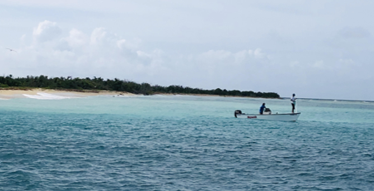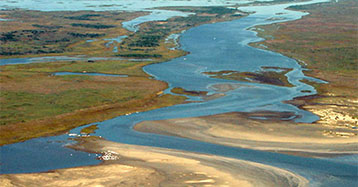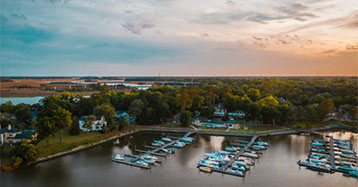Human Use of Marine and Coastal Resources
Resource managers and community planners need to understand how people use, value, and impact natural resources to effectively manage coastal and marine areas. Managers who consider patterns of human use are better equipped to address conflicts between competing stakeholders. They are also able to better understand the potential impacts of human activities on sensitive natural resources and endangered species. NCCOS identifies and characterizes patterns of social, cultural, and economic behaviors that influence how coastal spaces are used and valued. Information on these patterns can be used to better manage these spaces.
Identifying Patterns of Human Activity
People use coastal and marine spaces, and the natural resources they contain, in a variety of ways, from recreational use to sustaining livelihoods. In addition to direct usage, like boating or picnicking, people also use coastal places and resources indirectly, such as benefiting from clean water that is filtered by a coastal wetland, or experiencing increased protection from coastal storms due to a healthy mangrove forest. NCCOS identifies, documents, and characterizes patterns of ecosystem use within our coastal and marine places, and develops user profiles. These profiles contain information on peoples’ activity preferences, expenditure patterns, and value preferences. With this information, managers know who is using coastal spaces and resources, as well as when, where, how, and for what purpose.
Assessing Human Reliance on Coastal Places
Coastal communities rely on special coastal places, natural resources, and features. Reliance upon a special place or natural resource can define a community both socially and economically, but substantial or exclusive reliance can also increase community vulnerability if the ecosystem changes. For example, reliance upon a specific fishery creates strong cultural attachment to the coast, but it can also reduce the community’s potential to thrive if the fishery declines. NCCOS can assess a community’s reliance on a certain area, resource, or feature to help community planners better understand their vulnerabilities and prepare for future changes.
Linking Patterns of Human Use to Valuation
The places most important to communities are often those that provide important ecosystem services, products, and functions. To effectively manage these important coastal areas, managers need to know which places are most valued by people. The intersection of human use and valuation research provides managers with the information required to make informed choices between different management alternatives. At NCCOS, we identify patterns of human use and couple that information with valuation data to highlight the range of values that exists for coastal and marine environments.
Take a Closer Look: Partnerships and Multimedia
We work very closely with managers at the National Ocean Service Special Places—NOAA’s National Marine Sanctuaries and National Estuarine Research Reserves—to map human uses and values and connect those results to policy actions and adaptive management plans.







